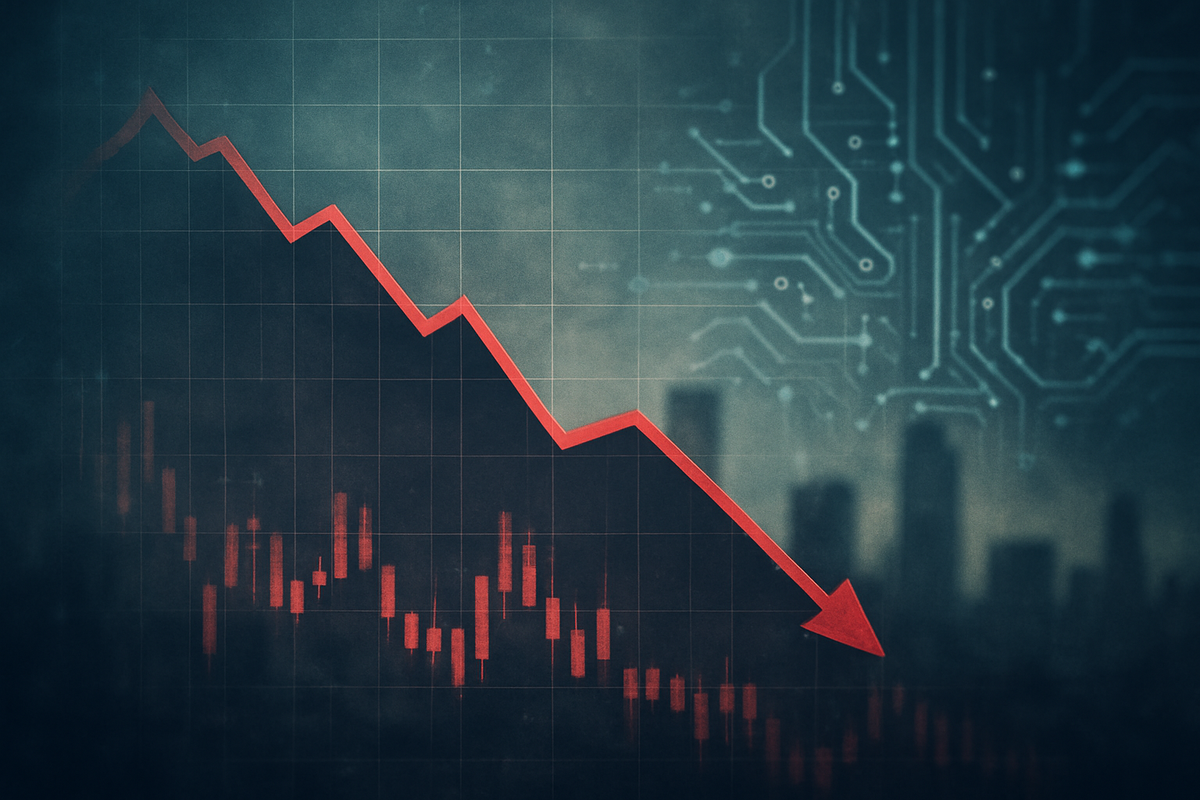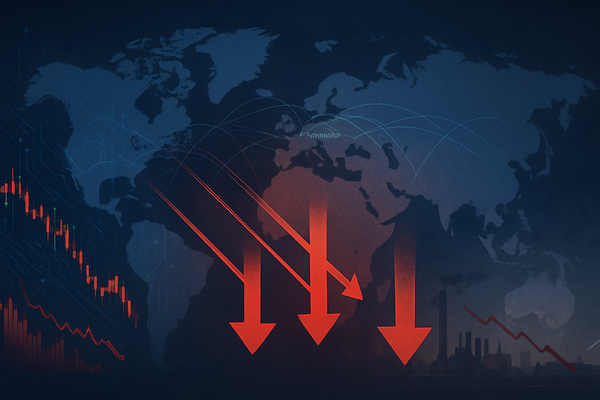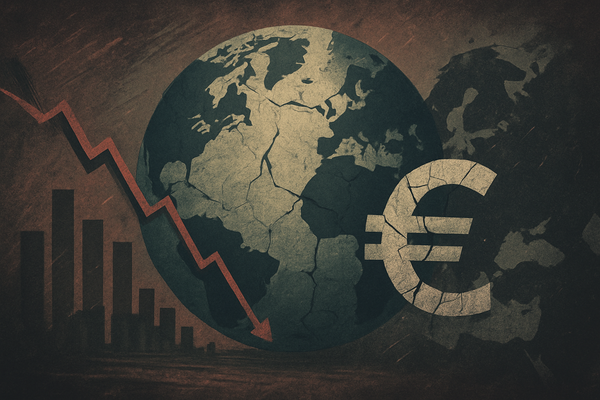Wall Street Stumbles: Tech Valuation Fears and Economic Jitters Trigger Market Downturn

New York, NY – November 6, 2025 – Wall Street’s main indexes opened sharply lower today, experiencing a significant downturn as investors grappled with growing concerns over surging valuations in the technology and artificial intelligence (AI) sectors, coupled with persistent economic uncertainties. The market's slip signals a palpable shift in investor sentiment, moving from speculative exuberance to cautious apprehension, raising questions about the sustainability of recent market rallies.
The S&P 500 (SPX) led the decline, falling by 1.1% by market close, while the tech-heavy Nasdaq Composite (IXIC) experienced an even sharper drop, underscoring its sensitivity to shifts in the technology landscape. The Dow Jones Industrial Average (DJIA) also closed lower, albeit with a less pronounced dip, reflecting a broad-based unease permeating the financial markets. This downturn marks a critical juncture, as market participants reassess risk amidst an environment where the allure of AI-driven growth is increasingly overshadowed by fundamental valuation concerns and a murky economic outlook.
Unpacking the Market's Retreat: A Confluence of Factors
Today's market slide is the culmination of several intertwined factors that have been brewing beneath the surface of recent market highs. A significant driver is the escalating debate around the stretched valuations of companies within the technology and AI sectors. The "Magnificent Seven" – a group of large tech companies with substantial AI investments – have disproportionately fueled the S&P 500's gains, with the information technology sector's weight in the index reaching historic levels, at one point surpassing 35%. While this concentration has led to impressive rallies, it also creates a precarious situation where any significant pullback in these bellwether stocks can trigger a broader market decline. Concerns about an "AI bubble" are resurfacing, with analysts drawing parallels to the dot-com bust of the early 2000s, questioning whether current valuations are justified by fundamentals or driven by speculative fervor. For example, some AI companies, despite beating earnings, have seen their stock decline due to extremely high price-to-earnings ratios, such as Palantir Technologies (NYSE: PLTR) with its reported 700x earnings multiple.
Adding to the valuation worries are persistent economic uncertainties that continue to weigh heavily on investor confidence. Inflation, though showing signs of moderation, remains a concern, prompting the Federal Reserve to maintain a hawkish stance on interest rates. Higher interest rates increase borrowing costs for businesses, impacting profitability and reducing the present value of future earnings, which disproportionately affects growth stocks prevalent in the tech sector. Furthermore, the job market, while robust, has shown some recent signs of softening, with a surge in U.S. layoffs reported in October 2025 contributing to the cautious sentiment. This confluence of factors – stretched valuations, sticky inflation, elevated interest rates, and evolving job market dynamics – has created a fertile ground for today's market retreat, signaling a collective reassessment of risk by investors.
Navigating the Volatility: Potential Winners and Losers
In a market downturn driven by valuation concerns and economic uncertainty, the landscape for public companies shifts dramatically, creating both vulnerabilities and opportunities. Companies with high growth expectations and elevated valuations, particularly within the technology and AI sectors, are likely to face significant headwinds. Large-cap tech giants that have led recent rallies, such as NVIDIA (NASDAQ: NVDA), Microsoft (NASDAQ: MSFT), and Alphabet (NASDAQ: GOOGL), could see further pressure on their stock prices if investors continue to rotate out of high-multiple growth stocks. Smaller, less established AI firms with speculative business models and no clear path to profitability are even more susceptible to sharp corrections, as investor appetite for risk diminishes.
Conversely, sectors and companies traditionally considered "value" plays or those with strong, stable cash flows and less reliance on future speculative growth may emerge as relative winners. Consumer staples, utilities, and healthcare companies, often characterized by consistent demand for their products and services, tend to be more resilient during economic downturns and periods of market volatility. Furthermore, companies with strong balance sheets, low debt levels, and a history of consistent dividend payments may become attractive safe havens for investors seeking stability. This market correction could also benefit companies that have been overlooked during the tech-led rally, bringing their more reasonable valuations into focus.
Broader Implications and Historical Echoes
Today's market downturn is not an isolated event but rather fits into broader industry trends marked by an increasing concentration of market capitalization in a handful of technology giants. This trend, while driving index performance for a period, also introduces systemic risk. Should these dominant players face sustained valuation corrections, the ripple effects could extend far beyond their immediate ecosystems, impacting suppliers, partners, and even the venture capital landscape that fuels early-stage innovation. Regulatory bodies might also intensify their scrutiny of market concentration and potential anti-competitive practices if the downturn deepens and is perceived to be exacerbated by unchecked growth in specific sectors.
Historically, periods of rapid technological advancement and speculative investment have often been followed by market corrections. The dot-com bubble of the late 1990s and early 2000s serves as a potent reminder of how quickly investor enthusiasm can turn into widespread capitulation when valuations detach from fundamentals. While the current AI revolution is undoubtedly transformative, the parallels in terms of speculative fervor and concentrated market gains are undeniable. This event underscores the cyclical nature of market psychology, where periods of irrational exuberance are eventually tempered by a return to fundamental analysis and risk assessment.
What Comes Next: Navigating the Uncertainty
In the immediate term, investors should brace for continued volatility. The market is likely to remain sensitive to upcoming economic data, particularly inflation reports, interest rate decisions from the Federal Reserve, and further job market indicators. Any signs of persistent inflation or a more aggressive stance from the Fed could prolong the downturn. Conversely, data indicating a controlled slowdown and easing inflationary pressures might provide some relief. Companies, especially those in the tech and AI sectors, may need to strategically pivot, focusing more on profitability and sustainable growth rather than solely on top-line expansion, to regain investor confidence. This could involve cost-cutting measures, re-evaluating investment priorities, and demonstrating clear paths to positive free cash flow.
Long-term possibilities include a potential rebalancing of market leadership, with value stocks and more diversified sectors gaining prominence. This period could also present opportunities for discerning investors to acquire high-quality tech and AI companies at more reasonable valuations, provided their underlying fundamentals remain strong. The emphasis will likely shift from speculative bets to companies with robust business models, proven earnings, and a clear competitive advantage. The market may be entering a phase where disciplined investing, focused on fundamentals and risk management, becomes paramount.
Wrap-Up: A Call for Prudence
Today's significant downturn in the US stock market serves as a crucial reminder of the inherent risks associated with concentrated market rallies and the enduring influence of macroeconomic factors. The confluence of surging tech and AI valuations and persistent economic uncertainties has created a challenging environment for investors. Key takeaways include the vulnerability of market-cap-weighted indexes to corrections in dominant sectors and the critical role of inflation and interest rates in shaping investor sentiment.
Moving forward, the market is likely to remain in a state of flux, with continued scrutiny on corporate earnings, economic data, and central bank policies. Investors should prioritize diversification, re-evaluate their risk tolerance, and conduct thorough due diligence, especially in high-growth, high-valuation sectors. The coming months will test the resilience of both companies and investors, emphasizing the importance of a long-term perspective and a focus on fundamental value. What investors should watch for in coming months are clear signals on inflation trajectory, the Federal Reserve's next moves, and any shifts in corporate guidance regarding future profitability.
This content is intended for informational purposes only and is not financial advice



